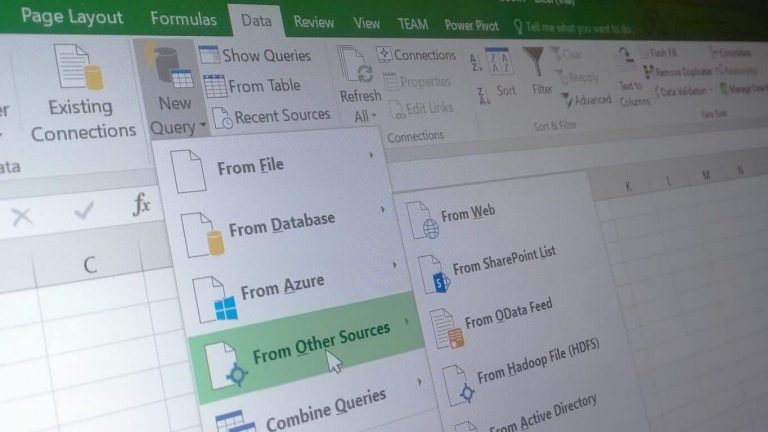The pervasive tech of today without a doubt is big data. Companies and tools are springing up to analyze and visualize the massive amounts of data being collected by companies. Historically, Excel has been a common tool for breaking down and displaying datasets. Today, however, companies need more than the standard set of Excel functions are needed to gain useful insights into big data.
Excel 2016 does not appear to be a big change, but all things considered this release is huge. With Excel, Microsoft is selling a spreadsheet tool to consumers and massive multi-national corporations. To bridge the gap between the casual and power users, Microsoft has been taking corporate features/tools and slowly integrating them into Excel. Power Query was an enterprise tool but now has been integrated into Excel 2016 for everyone.
Enterprises have databases full of data in several different sources stored in different formats and different containers. Excel 2016 comes in a premium version and when paired with Power BI can be used to access a wealth of enterprise data. Companies will be able to access data stored in Azure, Hadoop, Active Directory, Dynamic CRM, SalesForce, and more and new PowerChart capabilities in make visualizing the data easy and useful.
Covered previously on WinBeta, Excel 2016 introduces new chart types such as Box and Whisker, Praeto, TreeMap, Sunburst, and Histograms. Companies looking to slice through statistical data and create easy to use quick to understand visualizations will finally find these options in Excel 2016. Analyzing the data can be done easier on with new forecasting functions such as exponential smoothing. Here is a list of other data analysis features in Excel 2016:
- Automatic relationship detection discovers and creates relationships among the tables used for your workbook’s data model, so you don’t have to. Excel 2016 knows when your analysis requires two or more tables to be linked together and notifies you. With one click, it does the work to build the relationships, so you can take advantage of them immediately.
- Creating, editing and deleting custom measures can now be done directly from the PivotTable fields list, saving you a lot of time when you need to add additional calculations for your analysis.
- Automatic time grouping helps you to use your time-related fields in your PivotTable more powerfully, by auto-detecting and grouping them on your behalf. Once grouped together, simply drag the group to your PivotTable in one action and immediately begin your analysis across the different levels of time with drill-down capabilities.
- PivotChart drill-down buttons allow you to drill in and out across groupings of time and other hierarchical structures within your data.
- Search in the PivotTable field list helps you get to the fields that are important to you across your entire data set.
- Smart rename gives you the ability to rename tables and columns in your workbook’s data model. With each change, Excel 2016 automatically updates any related tables and calculations across your workbook, including all worksheets and DAX formulas.
- Multiple usability improvements have also been made. For example, delayed updating allows you to perform multiple changes in Power Pivot without the need to wait until each is propagated across the workbook. The changes will be propagated at one time, once the Power Pivot window is closed.
If you are an individual or company looking to get a early start on these features check out the Office 2016 preview which is available now.


